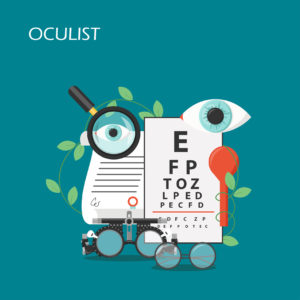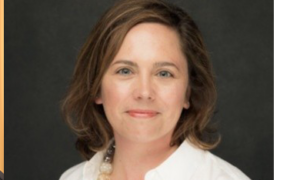By Gary Gerber, OD
 Are you a myopia dabbler? Take this quiz and find out.
Are you a myopia dabbler? Take this quiz and find out.
Your patient is a four-year-old female and visiting your practice for the first time. Her previous records are not available. Your cycloplegic refraction reveals -0.50 OU. The patient is of East Asian ancestry, and her parents are both myopic, as is her nine-year-old brother. She is in an accelerated math and physics program and loves to play soccer and swim.
At the close of the exam, when you tell the parents about her nearsightedness, they ask you about some special overnight lenses to correct her vision while she sleeps so she would be able to swim without any correction.
You respond, “Well, she’s too young to wear contact lenses, and besides, her vision isn’t that bad, so she’ll be able to see just fine without any correction. My advice is that we watch her and see what happens, or if you’d like, you can get her some eyeglasses for part-time wear for things like seeing the whiteboard or anything else that’s far away that she might complain about. But, if she’s not complaining, it’s OK to do nothing and bring her back in a year.”
On a scale of 1 – 10, where one is “I strongly disagree with this approach,” and 10 is “I strongly agree with the approach,” what is your score?
If you chose two or higher, congratulations, you have earned your honorary MMD degree (Myopia Management Dabbler).
Here are few clinical points to consider before we get into the dangers of dabbling, and those don’t just apply to the patient!
First, four-year-old children aren’t supposed to be myopic (for that matter, no one should be). The data is abundantly clear that myopia management therapies work best when started early, but dabblers often wait “until it gets worse.” Many MMDs might respond, “I didn’t have access to the patient’s previous record, so I don’t know if she’s progressing.” Astute myopia management practitioners will note the patient already has progressed, since she’s supposed to be about +1.00 D1.
Her parents asked about orthokeratology lenses, and as a certified MMD, you allowed their question to put you squarely into the vision correction box instead of staying solidly in the myopia management box. That is likely why you were comfortable saying she’s too young for contact lenses because the VA benefit would be so small. Of course, MMDs miss the myopia management benefit of lenses fit specifically for myopia management versus acuity. Not to mention, there are treatments other than contact lenses, such as topical low-dose atropine, you could have discussed with the parents.
Next, in allowing her to go a full year without a visit, you have accelerated to the head of the MMD honorary PhD program. In addition to recommending treatment for her at this first visit, you should have measured her axial length. When parents decline treatment, you should see patients like this again in a few months for a serial measurement and more discussion with the parents. In addition to already being a young myope, she has other risk factors for rapid progression.
So, the first problem with dabbling is the patient obviously received less than optimal care.
Next, there is a high probability, approaching near certainty, that this child’s myopia will continue to progress. When it does, and parents start to dig deeper as to why that happened and what could have been done about it, they will likely feel guilty for not doing something sooner.
That leads to the next MMD casualty. If enough ODs continue to dabble the entire myopia management movement will remain at its current snail’s pace. There’s only one honest answer for parents who ask proactive myopia management practitioners, “Why haven’t I heard about this before?” That answer is, “Because your last doctor didn’t tell you.” It’s not any more complicated than that.
Finally, with MMDs compromising the child, parent, and the profession, can your practice be far behind? Incremental revenue aside, as myopia management grows in awareness, you have three simple choices. Do nothing about it, practice it yourself, or refer kids to a competent practitioner. The first choice is dangerous. Which one will you choose?
To break your MMD mindset, attend an upcoming THE Myopia Meeting or contact me at Grow@TreehouseEyes.com to learn how.

Gary Gerber, OD, is the co-founder of Treehouse Eyes.
1Mayer, D. L., Hansen, R. M., Moore, B. D., Kim, S., & Fulton, A. B. (2001). Cycloplegic refractions in healthy children aged 1 through 48 months. Archives of Ophthalmology, 119(11), 1625-1628.













